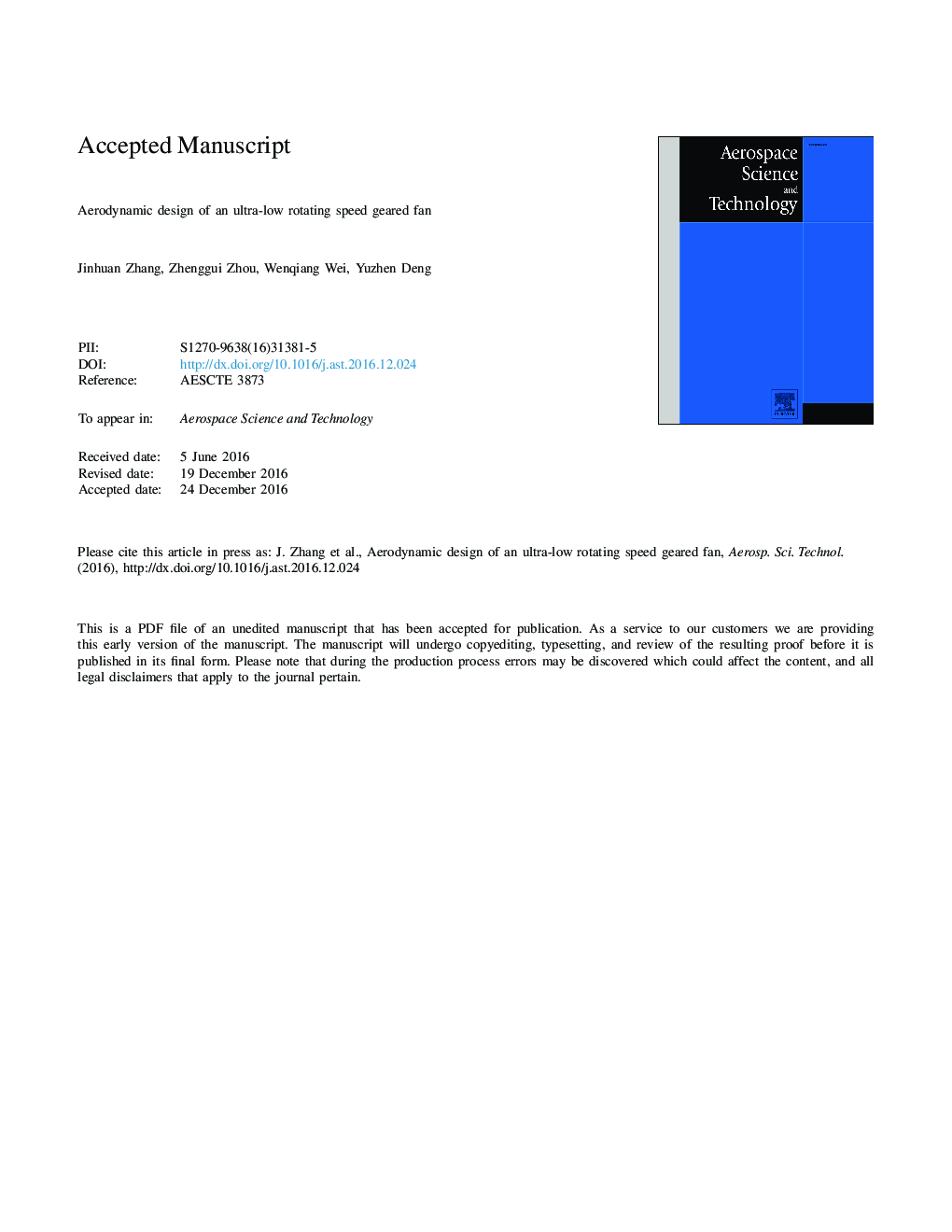| Article ID | Journal | Published Year | Pages | File Type |
|---|---|---|---|---|
| 5473031 | Aerospace Science and Technology | 2017 | 13 Pages |
Abstract
For a geared fan with a high bypass ratio, it is easy to reduce its rotating speed by increasing the gear's reduction ratio without changing the original structure of the turbofan engine. A reduction in the rotating speed can effectively reduce the aerodynamic noise of the engines. In addition, due to the low rotating speed, the requirement for structural strength decreases, thus the blade thickness can be reduced, further effectively reducing the engine's weight. This study presents a new concept of diffusion blade profiles for designing a fan rotor with an ultra-low rotating speed. The blade profiles of the new concept are characterized by large cambers and convergent blade passages in their rear parts. A large camber contributes to an ultra-high load, and a convergent blade passage contributes to the control of the growth of the boundary layers on blade surfaces and reduces the flow losses. Flow field numerical simulations show that the designed fan has nearly the same mass flow rate and total pressure ratio as an existing fan, but its rotating speed is only 2240 RPM, much lower than that of the existing fan (3700 RPM), and its efficiency at design point is 0.964. Research on stacking line sweep indicates that the forward sweep at blade root can effectively reduce the relative Mach number at the outlet, thus reducing the losses from shock waves and increasing the efficiency.
Keywords
Related Topics
Physical Sciences and Engineering
Engineering
Aerospace Engineering
Authors
Jinhuan Zhang, Zhenggui Zhou, Wenqiang Wei, Yuzhen Deng,
